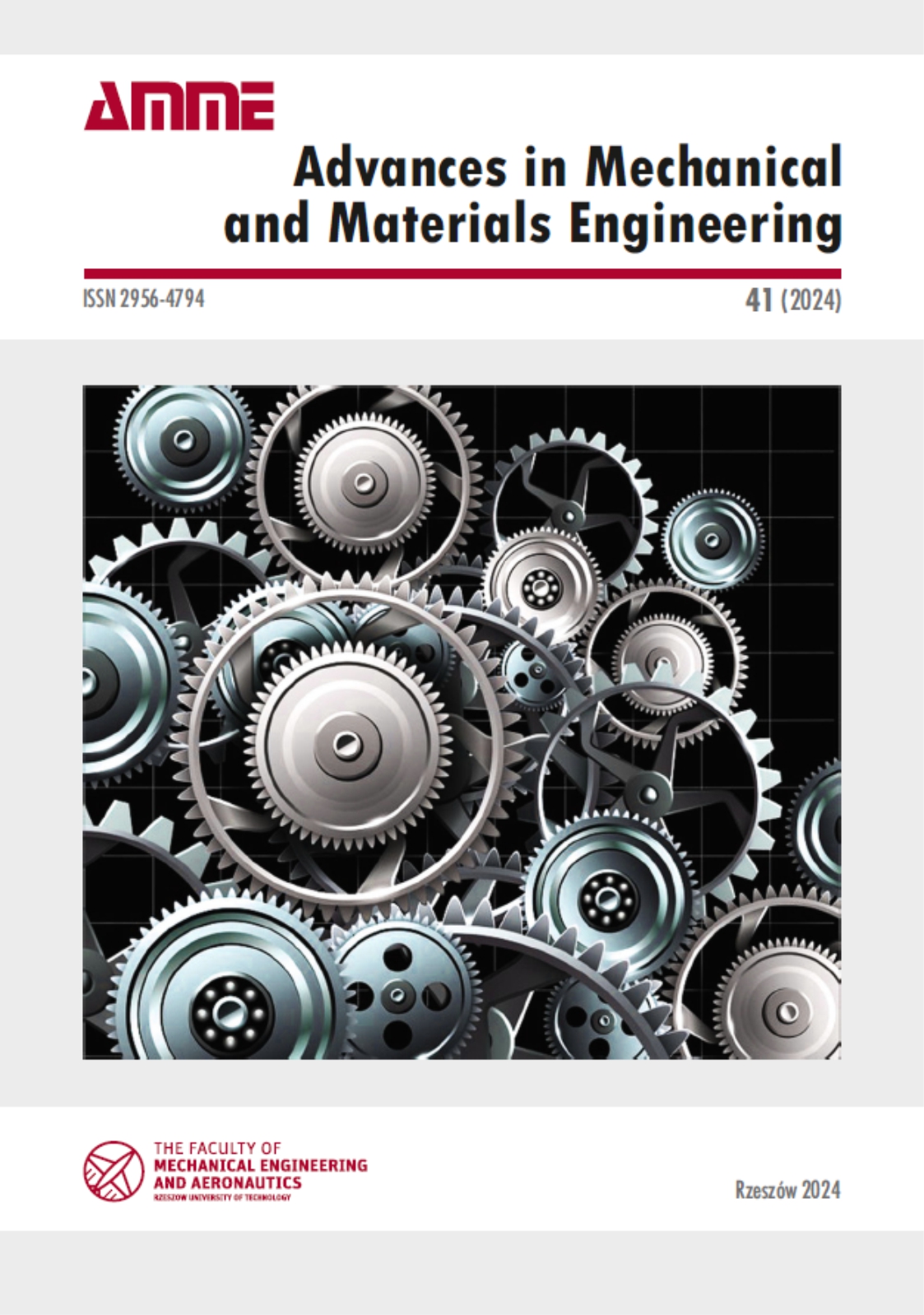Abstract
This study presents the structural effectiveness of fixed offshore platforms, addressing the challenges posed by complex loading conditions in marine environments. The structural performance of the fixed offshore platform was assessed using Finite Element Analysis performed in ABAQUS CAE software, with particular focus on the impact of intrinsic stress induced by corrosion and environmental loads such as; wind, waves, and operational activities. The reliability of the fixed offshore platform was also assessed using Monte Carlo’s reliability method. The study utilized advanced design equations to evaluate the structural reliability and rate of corrosion of the fixed offshore platform in order to estimate the safety of the structure. Results indicated that there are high stress values in the beam and column connections and also in the columns due to the effect of depleting cross-sectional area with respect to time and also the intrinsic stresses as a result of the applied loadings. Hence, selecting a high-grade steel and a higher cross-sectional area for structural members with slow the rate of corrosion and also reduce the intrinsic stresses due to the loadings on the structure. This will not only improve the load-bearing capacity but also significantly reduced the risk of structural failure, aligning well with empirical data. Furthermore, the study highlighted the importance of considering the interaction between material properties, connection characteristics, and loading conditions in the design process. These findings contribute to the development of more robust and durable fixed offshore platforms, ensuring their safety and longevity in demanding operational environments.
References
Abejide, K., Akadang, O. L. B, & Abejide, O. S. (2022). Stochastic Evaluation of Structural Steel Plates Corrosion in Offshore Platforms. Haya: The Saudi Journal of Life Sciences, 7(5), 163-175. https://doi.org/10.36348/sjls.2022.v07i05.004
American Association of State Highway and Transportation Officials. (2020). LRFD Bridge Design Specifications (9th Ed.). American Association of State Highway and Transportation Officials. American Institute of Steel Construction. (2024). AISC Student Steel Bridge Competition. https://www.aisc.org/globalassets/aisc/university-programs/ssbc/rules/ssbc-2024-rules_final.pdf
American Welding Society. (2020). AWS D1.1/D1.1M: Structural Welding Code – Steel (23rd Ed.). American Welding Society. https://pubs.aws.org/Download_PDFS/D1.1-D1.1M-2015-PV.pdf?srsltid=AfmBOoo13mUQ0-yYri65tN1UHx_4NOSb7RFxHbwmXRcrD55Y7rWgV8Ll
Brijder, R., Hagen, C. H., Cortés, A., Irizar, A., Thibbotuwa, U. C., Helsen, S., Vásquez, S., & Ompusunggu, A. P. (2022). Review of corrosion monitoring and prognostics in offshore wind turbine structures: Current status and feasible approaches. Frontiers in Energy Research, 10, Article 991343. https://doi.org/10.3389/fenrg.2022.991343
Chen, B. Q., Liu, K., & Xu, S. (2024a). Recent advances in aluminum welding for marine structures. Journal of Marine Science and Engineering, 12(9), Article 1539. https://doi.org/10.3390/jmse12091539
Chen, M. T., Gong, Z., Cao, H., Zhang, J., Ren, F., Ho, J. C. M., & Lai, M. (2024b). Residual mechanical pro-perties of corroded ultra-high-strength steels and weld metals. Thin-Walled Structures, 205, Article 112397. https://doi.org/10.1016/j.tws.2024.112397
Dutta, A., Pal, S. K., & Panda, S. K. (2024). Friction stir seam-and spot-welded aluminium honeycombs: Enhanced structural integrity eliminating adhesive bonding challenges. Journal of Materials Processing Technology, 330, Article 118449. https://doi.org/10.1016/j.jmatprotec.2024.118449
Elqars, E., Bimoussa, A., Barhoumi, A., Laamari, Y., Byadi, S., Oubella, A., Riadi, Y., Essadki, A., Auhmani, A., & Itto, M. Y. A. (2024). Synthesis and characterization of bis-isoxazoline-thiosemicarbazone as a corrosion inhibitor for carbon steel: Experimental study, and molecular simulation. Journal of Molecular Structure, 1312, Article 138476. https://doi.org/10.1016/j.molstruc.2024.138476
European Committee for Standardization. (2023). Hot rolled products of structural steels - Part 4: Technical delivery conditions for thermomechanical rolled weldable fine grain structural steels (EN Standard No 10025-4:2023).
Ghanadi, M., Hultgren, G., Narström, T., Clarin, M., & Barsoum, Z. (2024). Fatigue assessment of welded joints-size effect and probabilistic approach. Journal of Constructional Steel Research, 221, Article 108884. https://doi.org/10.1016/j.jcsr.2024.108884
He, Z., He, C., Ma, G., Yang, W., & Kang, X. (2023). Performance assessment of partially corrosion-damaged RC segment incorporating the spatial variability of steel corrosion. Construction and Building Materials, 371, Article 130789. https://doi.org/10.1016/j.conbuildmat.2023.130789
Kollár, D. (2023). Numerical modelling on the influence of repair welding during manufacturing on residual stresses and distortions of T-joints. Results in Engineering, 20, Article 101535. https://doi.org/10.1016/j.rineng.2023.101535
International Organization for Standardization. (2020a). Petroleum and natural gas industries – Fixed steel off- shore structures (ISO Standard No. 19902:2020). https://www.iso.org/standard/65688.html
International Organization for Standardization. (2020b). Petroleum and natural gas industries – Specific requirements for offshore structures. Part 3: Topsides structure (ISO Standard No. 19901-3:2020. https://www.iso.org/standard/65041.html
Pradhan, R., Joshi, A. P., Sunny, M. R., & Sarkar, A. (2022). Performance of predictive models to determine weld bead shape parameters for shielded gas metal arc welded T-joints. Marine Structures, 86, Article 103290. https://doi.org/10.1016/j.marstruc.2022.103290
Rautiainen, M., Remes, H., Niemelä, A., & Romanoff, J. (2023). Fatigue strength assessment of complex welded structures with severe force concentrations along a weld seam. International Journal of Fatigue, 167, Article 107321. https://doi.org/10.1016/j.ijfatigue.2022.107321
Saufnay, L., Jaspart, J. P., & Demonceau, J. F. (2024). Improvement of the prediction of the flexural buckling resistance of hot-rolled mild and high-strength steel members. Engineering Structures, 315, Article 118460. https://doi.org/10.1016/j.engstruct.2024.118460
Şeker, Ö. (2021). A practical finite element model of tsadwa type semi-rigid connections for push-over analysis of steel frames in SAP2000 [Master's thesis, Izmir Institute of Technology].
Walter, N. M. B., Lemos, G. V. B., Kieckow, G. S., Buzzatti, D. T., Buzzatti, J. T., Mattei, F., Reguly, A., Clarke, T., Paes, M. T. P., Dalpiaz, G., & Marinho, R. R. (2024). Investigating microstructure, mechanical properties, and pitting corrosion resistance of UNS S32760 super duplex stainless steel after linear friction welding. Journal of Materials Research and Technology, 31, 1637-1643. https://doi.org/10.1016/j.jmrt.2024.06.191
Wang, H., Wang, J., Cao, J., Zhao, J., Qian, W., & Du, H. (2024a). Optimization design of main hinge joint structure based on weld failure analysis. Engineering Failure Analysis, 163, Article 108447. https://doi.org/10.1016/j.engfailanal.2024.108447
Wang, L., Qian, X., & Feng, L. (2024b). Effect of welding residual stresses on the fatigue life assessment of welded connections. International Journal of Fatigue, 189, Article 108570. https://doi.org/10.1016/j.ijfatigue.2024.108570
Zhou, H., Kinefuchi, M., Takashima, Y., & Shibanuma, K. (2024). Multiscale modelling strategy for predicting fatigue performance of welded joints. International Journal of Mechanical Sciences, 284, Article 109751. https://doi.org/10.1016/j.ijmecsci.2024.109751


